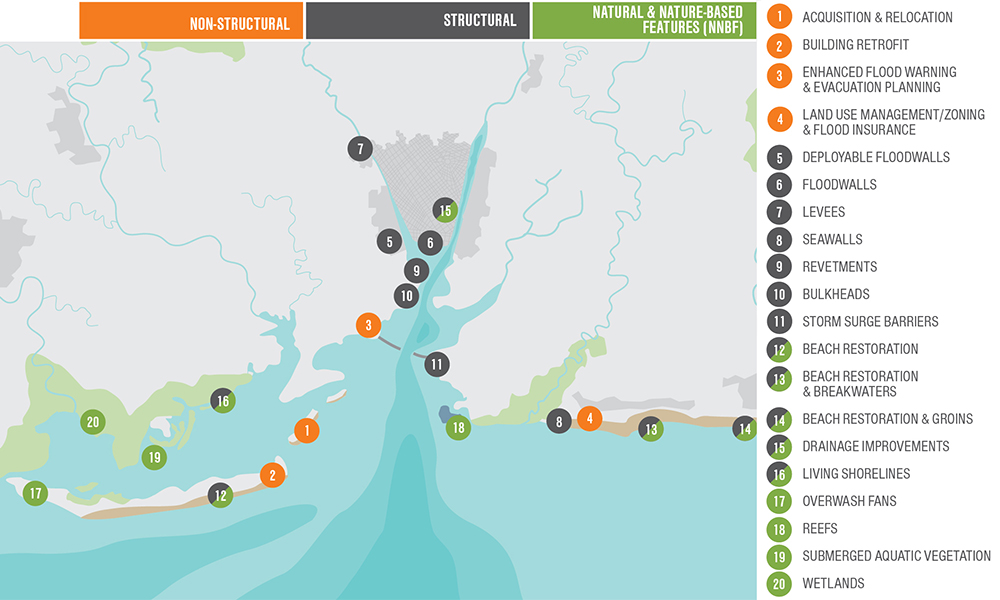
This map shows various coastal storm damage risk management strategies communities can use to adapt to anticipated base flood level change by 2100 (at a non-specific location). Although specific communities should consider a range of all possible solutions based on site-specific conditions, not all strategies to reduce coastal storm damage risk are structural solutions.